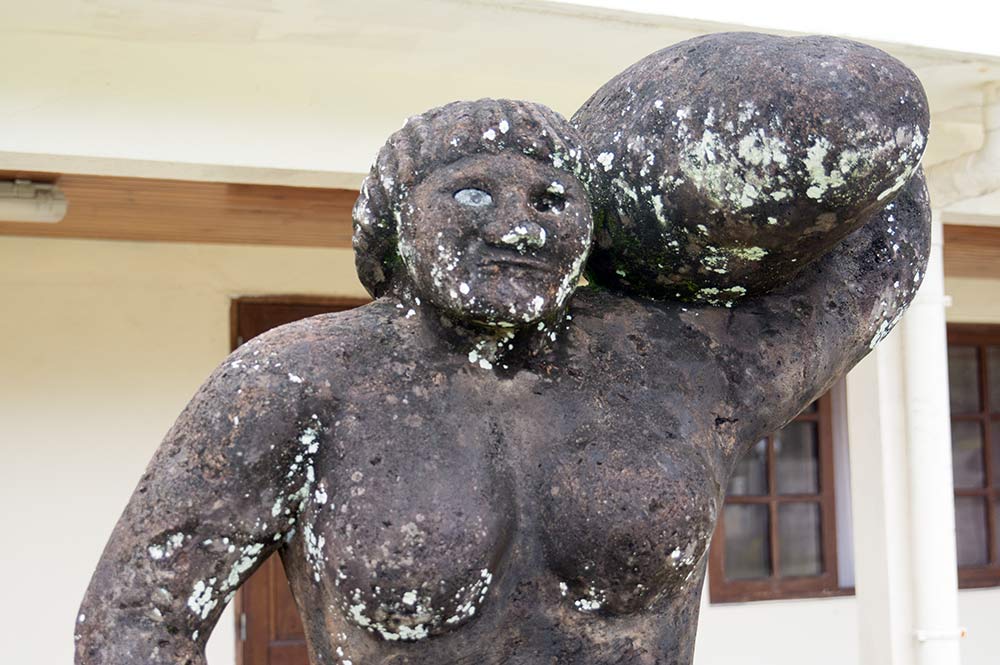Polynesian stonelifting

Stonelifting at Heiva
Every year during July the Heiva festival is celebrated across the islands of French Polynesia in the South Pacific. Heiva is about celebrating and showcasing ancient Polynesian culture and heritage with art, dance, music, crafts, and sports.
The origins of the festival date back to the 1800s. European Protestant missionaries banned several important parts of Tahitian culture, including dance, art, and tattooing — they even destroyed stone temples. All in an attempt to erase the Tahitians’ “offensive” culture.
By the late 1800s Tahiti was annexed by France, and Tahitians were permitted to participate in their traditional celebrations which they had been practicing in secret. However, this was allowed only on Bastille day (14th of July) each year. Eventually — after greater autonomy from France — the festival became Heiva I Tahiti in 1985.
One of the most competitive aspects of the Heiva celebrations is the Heiva Sports Competition where multiple traditional sports are contested. Among them are outrigger canoeing, javelin throwing, and (what we’re interested in most) stonelifting!
Stonelifting — locally Amoraʻa Ofaʻi — is an ancient Polynesian sport that has been practiced for centuries. It involves lifting stones as heavy as 160kg (350 lb) (and occasionally more) to the shoulder. In ancient times the sport may have represented a rite of passage into adulthood, or a demonstration of power between clans. We’ve also found reference to stonelifting being used as part of a series of challenges to find suitors for the chief’s daughter. Historically, stones were coated in Mono’i (coconut oil) before lifting.1
Origins
Rurutu stonelifting
Although Amoraʻa Ofaʻi is more famously seen at the Heiva festival, its debut there was only in 1982. The origins of stonelifting in French Polynesia are on the island of Rurutu in the Austral archipelago.
On Rurutu stonelifting is a major sport, and its athletes are stonelifting specialists. There are two main stonelifting events during the year — the first at the Tere in January just after the turn of the New Year, and the second at the Heiva festival in July. The Tere is the more traditional and historic event for the island.
The Tere is an island tour organized and performed by each of the island’s three villages (Moerai, Avera, and Hauti). In turn, the aito (heroes, or warriors) arrive in the next village to lift that village’s stones — in a sort of non-violent display of power. Villages are said to be more prosperous for the New Year the more members that compete and successfully lift the others’ stones. The men’s record is said to be over 200kg (440 lb).
Part of the tour involves an elder reciting the history of their village as the group travels around the island. They teach the significance of the different sites that they visit to the younger generation.2

Typical Amoraʻa Ofaʻi competition
A typical competition uses a format similar to other strength sport competitions. Athletes are split by gender and weightclass, and into master classes for those over 40.
The competitors must wear traditional attire too; shirtless and pareo for men, and pareo for women, everyone barefoot.
A suitably heavy stone is chosen for each class, extra heavyweight men can be expected to lift a 160kg (350 lb) stone, whilst women might lift one close to 80kg (176 lb). The stones are typically tall and narrow basalt pillars — rather than the egg shapes more representative of Scottish lifting stones. The shape allows some athletes to reach a deep squat to hug the stone into their chest for a more upright starting position. The length of the stone also helps with balancing on the shoulder.
Winners are decided by the fastest time to shoulder the stone, which is quite unlike other stonelifting events that we know of. Athletes get 2 attempts to set their fastest time. The timer starts as soon as the stone leaves the ground, and stops once the referee signals a good lift — when the stone is balanced on the shoulder with the opposing hand off of the stone. The timed nature of the event means lifts are often more dynamic, like a barbell clean.
Our research into stonelifting across French Polynesia is ongoing. We still have lots of unanswered questions about the history of stonelifting on the islands, as well as the greater cultural aspects. As we learn more, we will continue to update this page.
References
Read the liftingstones.org letters
Join thousands of other stonelifters who read the world's most popular stonelifting newsletter.